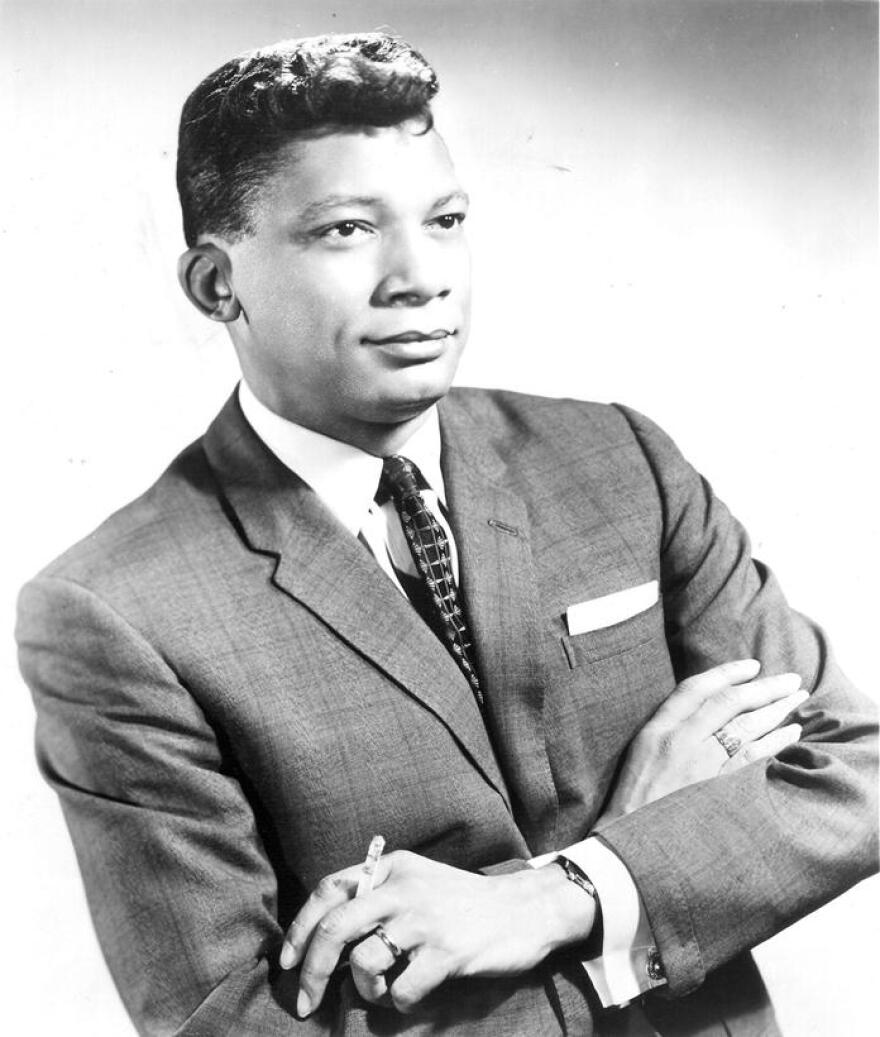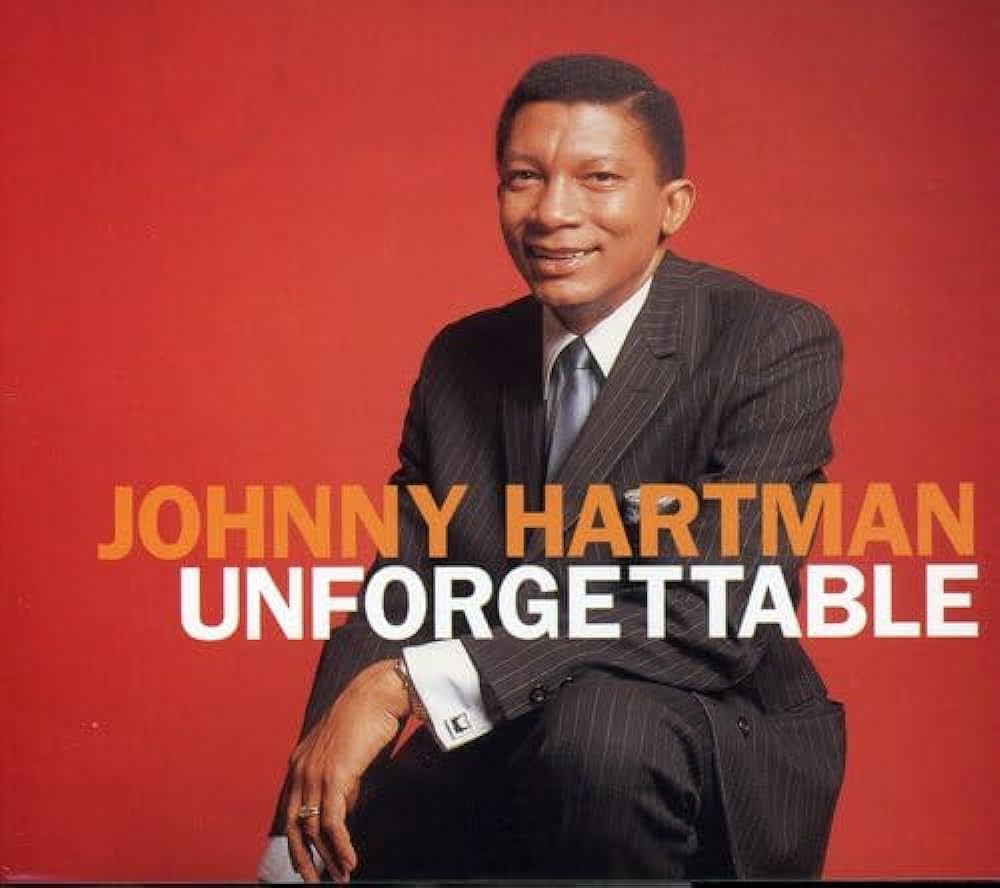Johnny Hartman – A Complete Biography
Introduction
Johnny Hartman (1923–1983) was an American baritone whose velvety tone and unerring diction made him one of the most cherished interpreters of romantic ballads in 20th-century jazz. Although audiences sometimes associate his mellow delivery with blues feeling, Hartman worked chiefly within jazz—singing standards with a storyteller’s poise and an actor’s attention to phrasing. His 1963 collaboration with John Coltrane became a touchstone for vocal jazz and, decades later, a gateway for new listeners when Clint Eastwood featured Hartman’s songs in The Bridges of Madison County. Long under-recognized commercially, Hartman nonetheless built a reputation among musicians and aficionados as the last great balladeer.

Childhood
John Maurice Hartman was born on July 3, 1923, in Houma, Louisiana, and spent his earliest years in a musical household where church singing and the piano were everyday fixtures. His family moved to Chicago, a city whose thriving Black music institutions and South Side clubs offered a living curriculum in jazz, gospel, and blues. By eight, Hartman was already singing and picking out melodies on the piano. At Chicago’s famed DuSable High School he studied under the legendary band director Walter Dyett, whose demanding program launched the careers of numerous future stars. Hartman’s musical promise earned him a scholarship to Chicago Musical College, giving him formal training that would later inform his careful diction and nuanced breath control.
Youth
During World War II, Hartman served in the Army’s Special Services, performing for troops and sharpening the stagecraft that would define his mature work. After the war he returned to Chicago, then headed to New York to test himself in the most competitive scene in American music. In September 1946 he won an Apollo Theater talent contest, a career break that led to a one-week booking with pianist-bandleader Earl Hines—extended to a year once Hines heard the young singer’s poise on ballads. When Hines dissolved his orchestra, Hartman briefly joined Dizzy Gillespie’s big band for a West Coast tour in 1948 and worked with pianist Erroll Garner. Those apprenticeships taught him how to float a line over complex harmonies and to pace a song so every lyric landed with conversational clarity.
Adulthood
Hartman began recording singles in the early 1950s and issued his first full albums in the mid-1950s, including Songs from the Heart (1956) and All of Me: The Debonair Mr. Hartman (1957). These releases established the template of his art: intimate tempos, elegant enunciation, and a baritone that seemed to glow from within. The wider pop market shifted toward rock ’n’ roll in the 1960s, but Hartman reached his artistic apex in 1963 when producer Bob Thiele paired him with John Coltrane. Cut in a single March afternoon at Rudy Van Gelder’s studio, John Coltrane and Johnny Hartman distilled Hartman’s strengths—tender storytelling, unforced legato—against the Classic Quartet’s supple support. The record would shadow everything Hartman made afterward and remains a perennial entry point for vocal-jazz newcomers.
Though the mid-to-late 1960s brought additional records, changing tastes limited his visibility. Hartman worked clubs, toured overseas, and recorded sporadically through the 1970s, including sessions in Japan and dates for independent labels. In 1980 he returned to small-group jazz on Once in Every Life, an album whose warm sonics and autumnal serenity earned him a Grammy nomination for Best Male Jazz Vocalist. It also captured the veteran singer at ease with his legacy: a craftsman who trusted economy over display and narrative truth over vocal pyrotechnics.
Major Compositions
Hartman was primarily an interpreter rather than a songwriter, so his “major compositions” are best understood as definitive recordings—performances in which his interpretive choices became canonical for listeners:
- “Lush Life” (John Coltrane and Johnny Hartman, 1963): Hartman’s conversational phrasing turns Billy Strayhorn’s harmonically intricate lament into a confessional monologue.
- “My One and Only Love” (1963): A masterclass in breath and line, with a long, arching opening phrase many singers emulate.
- “They Say It’s Wonderful” (1963): Hartman floats the melody with unhurried warmth, letting consonants land like soft punctuation.
- “Stairway to the Stars” (Songs from the Heart, 1956): Early proof of his ballad authority—glossy tone, unforced swing.
- “Easy Living,” “Wave,” and “I Could Write a Book” (Once in Every Life, 1980): Late-career statements that show his sound aging like fine mahogany—darker, rounder, more reflective.
These performances illustrate what made Hartman singular: immaculate pitch, legato lines that feel like silk ribbon, and a dramatist’s instinct for telling the truth of a lyric.
Death
In the early 1980s Hartman appeared at festivals and on broadcast engagements even as his health faltered. He died of lung cancer in New York City on September 15, 1983, at age 60. Posthumous recognition accelerated in 1995 when The Bridges of Madison County prominently featured four tracks from Once in Every Life, introducing his voice to a mass audience and spurring reissues of his catalog. Not long after, his 1963 collaboration with Coltrane was inducted into the Grammy Hall of Fame, affirming its lasting cultural weight.
Conclusion
Johnny Hartman’s career traces an arc familiar in American music: a virtuoso whose artistry outlived the fashions of his time. He never chased novelty or volume; instead, he pared songs to their emotional core and delivered them with a tact and intimacy few singers have equaled. Whether paired with a titanic improviser like John Coltrane or nestled inside a sympathetic trio, Hartman honored melody, protected language, and invited listeners closer. If jazz singing is, at its highest level, the art of making a standard feel like a personal letter, Johnny Hartman remains one of its most eloquent authors.

Comments are closed